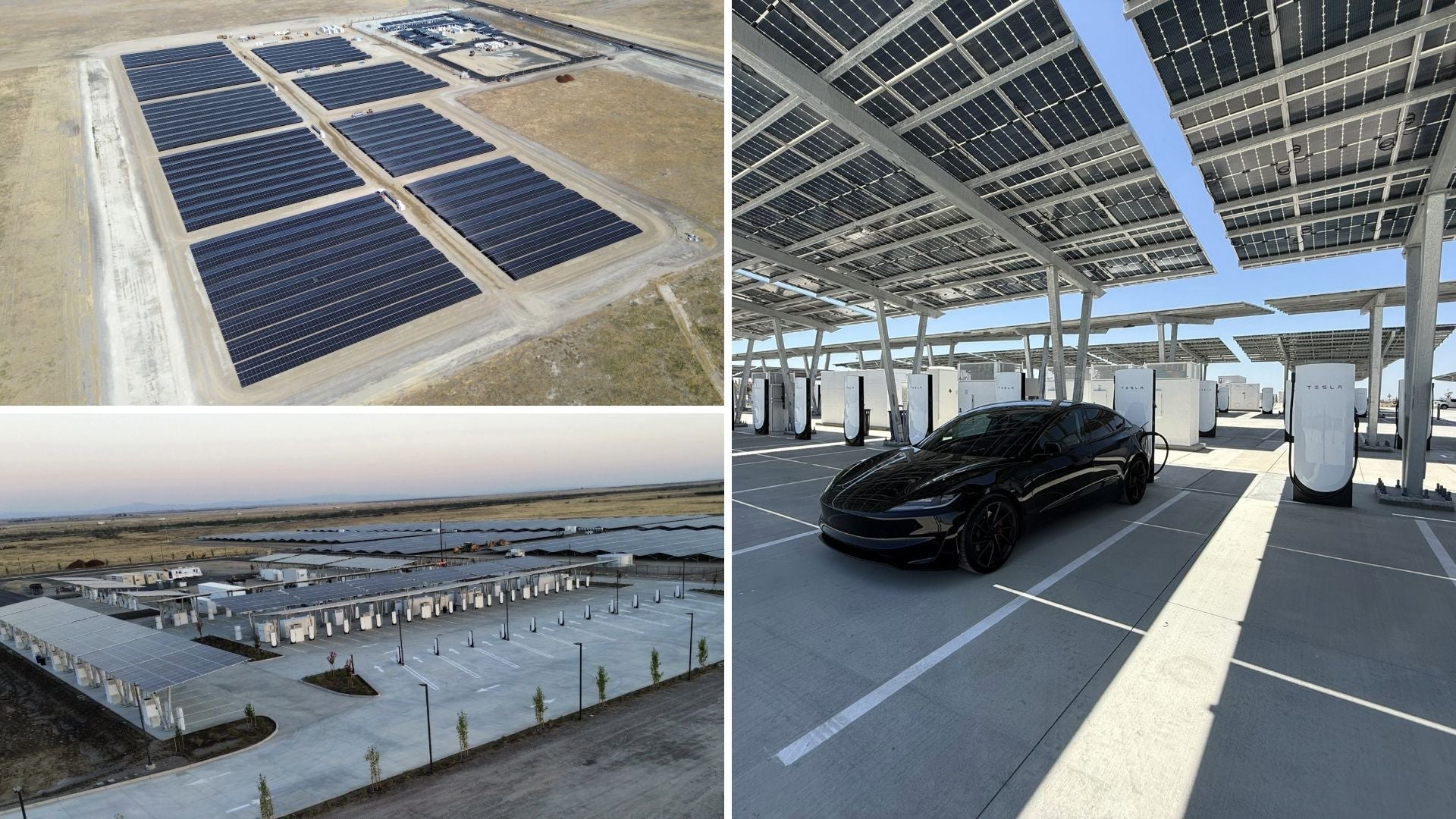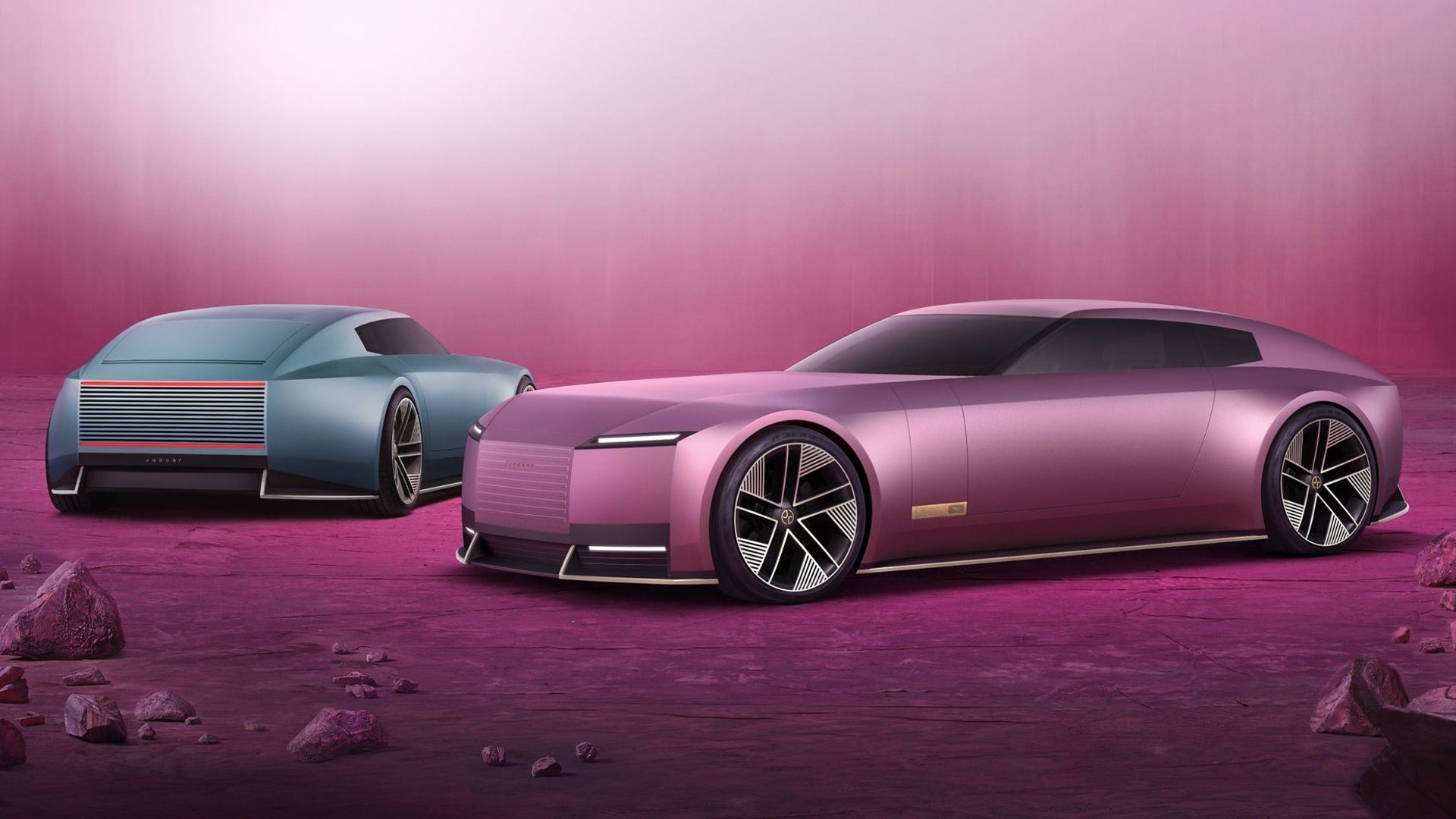Tesla hat seine erste vollständig netzunabhängige Supercharger-Station eingeweiht und damit einen Meilenstein in den Ambitionen des Unternehmens im Bereich saubere Energie erreicht. Die Station in Lost Hills, Kalifornien , ist unabhängig vom Stromnetz und nutzt ausschließlich Solarenergie und Megapack-Batteriespeicher . Nach ihrer Fertigstellung wird sie die weltweit größte Ladestation für Tesla sein und eine Blaupause für die zukünftige Infrastruktur von Elektrofahrzeugen liefern.

Solarbetriebenes Laden, 24/7-Fähigkeit
Kernstück des Projekts ist eine riesige 11-MW-Solaranlage , die sich über 12 Hektar Freiflächen und Überdachungen erstreckt. Unterstützt wird das System durch zehn Tesla Megapacks , die jeweils 39 MWh Energie speichern können. Diese Konfiguration stellt sicher, dass die Station auch lange nach Sonnenuntergang in Betrieb bleiben kann und unter typischen Nutzungsbedingungen bis zu 1.000 Elektrofahrzeuge pro Tag laden kann.
Obwohl für den Notfall ein Netzanschluss mit 1,5 MW vorhanden ist, betont Tesla, dass das Netz lediglich als Backup dient – die Solarstromerzeugung des Standorts kann den Energiebedarf unter optimalen Bedingungen um das bis zu Siebenfache übersteigen .

Bau des größten Supercharger-Hubs
Derzeit sind 84 Ladestationen geöffnet und in Betrieb. Bis Ende 2025 ist eine Erweiterung auf 168 Stationen geplant. Nach der Fertigstellung wird diese „Oasis“-Station der größte Schnellladeknotenpunkt für Elektrofahrzeuge entlang des I-5-Korridors sein – einer der meistbefahrenen Autobahnen zwischen San Francisco und Los Angeles .
Teslas Ziel besteht darin , ein konsistentes Hochgeschwindigkeitsladen ohne die Nutzung der herkömmlichen Netzinfrastruktur zu ermöglichen, wodurch die Belastung des bereits jetzt überlasteten Stromnetzes in Kalifornien verringert und die Zuverlässigkeit für Fahrer auf langen Strecken erhöht wird.
Umstieg auf V4-Kompressoren
Die Lost Hills-Station ist außerdem Teil der Einführung des Supercharger V4 von Tesla, der eine größere Bandbreite an Elektrofahrzeugen und Spannungsarchitekturen unterstützen soll. V4-Schränke bieten:
-
Ladegeschwindigkeiten von bis zu 500 kW für Cybertruck und kompatible Elektrofahrzeuge
-
Unterstützung für 1,2-MW -Laden für Tesla-Sattelschlepper
-
Kompatibilität mit 400-V- bis 1.000-V-Systemen
-
Verdoppeln Sie die Kapazität pro Schrank , sodass 8 Pfosten pro Einheit möglich sind
Diese Fortschritte verringern die Komplexität der Installation und verbessern gleichzeitig den Durchsatz und die Ladeeffizienz der Baustelle erheblich.

Verbessertes Benutzererlebnis: Virtuelle Warteschlangen
Um dem wachsenden Verkehr gerecht zu werden und Staus zu reduzieren, führt Tesla ein virtuelles Warteschlangensystem ein. Diese seit langem geforderte Funktion ermöglicht es Fahrern , Ladeplätze digital zu reservieren , wodurch Wartezeiten minimiert und der Ladefluss in Spitzenzeiten verbessert wird. Besonders wichtig für Feiertagswochenenden und stark frequentierte Korridore, spiegelt diese Funktion Teslas Umstellung auf eine softwareoptimierte Infrastruktur wider.
Ein neues Kapitel für nachhaltige Mobilität
Die netzunabhängige Supercharger-Station von Tesla stellt einen praktischen, skalierbaren Weg hin zu einer energieautarken Infrastruktur für Elektrofahrzeuge dar. Sie ist ein Eckpfeiler von Teslas umfassender Vision, Solarstromerzeugung, Batteriespeicherung und Elektromobilität in einem einheitlichen System zu integrieren.
Das Projekt spiegelt auch eine tiefere strategische Neuausrichtung von Tesla wider: vom bloßen Bau von Elektrofahrzeugen hin zum Besitz und Betrieb der gesamten Infrastruktur für saubere Energie, unabhängig von politischen Zyklen oder Netzbeschränkungen.
Angesichts der weltweit steigenden Nachfrage nach Elektrofahrzeugen könnte Teslas Oasis-Projekt als Vorbild für zukünftige Ladestationen auf der ganzen Welt dienen – mit Ladestationen, die den Energiebedarf decken können, ohne die empfindlichen Stromnetze zu überlasten.
Autor: Lay Wen
Quelle des Titelbilds: https://www.autoevolution.com/news/tesla-partially-opens-its-biggest-supercharger-station-in-the-world-powered-by-the-sun-253927.html








Aktie:
Tesla HW3-Update: Was passiert im Jahr 2025?
Das Wachstum der Elektroautos in Kalifornien erfordert eine koordinierte Infrastrukturplanung